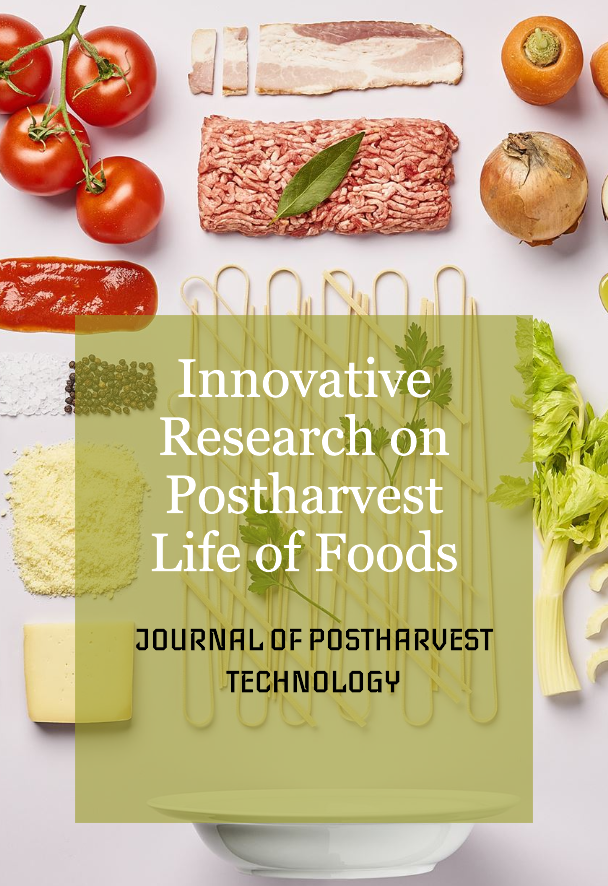Sustaining High Value Agricultural Products in Cold Storage Systems in India: Mitigation of Environmental Impact through Alternative Energy-Mix
DOI:
https://doi.org/10.48165/jpht.2024.12.2.13Keywords:
Cold storage, CO2 emissions, energy mix,, environmental degradation, high-value agricultural products (HVAP)Abstract
With the changing consumption pattern, people’s demand for high-value agricultural products (HVAP), such as meat, fish, eggs, fruits, vegetables, milk, and milk products, has been increasing in India in recent decades. This has led to a growth in the production of HVAP and an increased requirement for cold storage, which currently has an installed capacity of 37.5 million tons. The cold storage sector, which primarily uses vapor absorption and vapor compression technologies, is a significant consumer of energy and a potential cause of environmental degradation in India. This sector consumes 6 percent of the annual electrical energy output and produces 2.35 percent of carbon dioxide emissions in the country. Based on the changing consumption patterns and production trends of HVAP, the current study makes projections for the production of HVAP, required cold storage capacity, resultant energy consumption, and carbon dioxide emissions for 2030, 2040, and 2050. The study further shows that the use of an alternative energy mix through a switch from non-renewable to renewable energy can significantly reduce the share of the cold storage sector in total emissions to a mere 0.41 percent by 2050, thereby improving India’s energy and emissions future.
References
Central Electricity Authority. (2018). CO2 Baseline Database for the Indian Power Sector: User Guide. Ministry of Power, Government of India. Retrieved from https://cea.nic.in/wp-content/uploads/baseline/2020/07/user_guide_ver14.pdf
Central Electricity Authority. (2020). Growth of Electricity Sector in India, 1947-2020, October 2020. Ministry of Power, Government of India. Retrieved from https://cea.nic.in/wp-content/uploads/pdm/2020/12/growth_2020.pdf
Chengappa, P. G., Umanath, M., Vijayasarathy, K., Babu, P., & Devika, C. M. (2017). Demand for agro processed food products: An evidence from Indian households. Asian Journal of Agricultural Extension, Economics and Sociology, 16(1), 1-11.
Food and Agricultural Organization. (2020). Our World in Data. Retrieved from https://ourworldindata.org/
Gambhir, A., Tamaryn, A. N., Emmott, C. J. M., & Anadarajah, G. (2014). India’s CO2 emissions pathways to 2050: Energy system, economic and fossil fuel impacts with and without carbon permit trading. Energy, 77, 791-801. https://doi.org/10.1016/j. energy.2014.09.055
Ministry of Agriculture & Farmers Welfare. (2017). Report of the Committee for Doubling Farmers’ Income, Volume III, Post production Agri-logistics: Maximising gains for farmers. Government of India.
Ministry of Agriculture & Farmers Welfare. (2020). CS Facilities in the Country. Government of India. Retrieved from https://pib. gov.in/PressReleaseIframePage.aspx?PRID=1656802
Ministry of Environment, Forests and Climate Change. (2021). Ozone Cell. Study on Cold-chain sector in India for promoting Non-ODS and Low-GWP Refrigerants. Government of India.
Ministry of Food Processing Industries. (2014). Opportunities in Cold Chain Sector in India. Government of India. Retrieved from https://mofpi.nic.in/sites/default/files/OpportunitiesinColdChainSectorinIndia.pdf
Ministry of Power. (2021). Power Sector at a Glance: All India. Government of India. Retrieved from https://powermin.gov.in/en/ content/power-sector-glance-all-india
Gulati, A., Minot, N., Delgado, C., & Bora, S. (2006). Growth in high-value agriculture in Asia and the emergence of vertical links with farmers. In J. Swinnen (Ed.), Global supply chains, standards, and poor farmers. Retrieved from http://citeseerx.ist. psu.edu/viewdoc/download?doi=10.1.1.512.7000&rep=rep1&type=pdf
Jha, S. N., Vishwakarma, R. K., Ahmad, T., Rai, A., & Dixit, A. K. (2015). Report on assessment of quantitative harvest and post harvest losses of major crops and commodities in India. ICAR-All India Coordinated Research Project on Post-Harvest Technology, ICAR-CIPHET.
Mittal, S. (2006). Structural Shift in Demand for Food: Projections for 2020. Working Paper. ICRIER, New Delhi.
National Accounts Statistics. (2008). Private final consumption expenditure classified by item.(Statement 14). In mospi.nic.in.
Retrieved from Ministry of Statistics and Programme Implementation, Government of India. http://mospi.nic.in/publication/ national-statistics-2008
National Accounts Statistics. (2010). Private final consumption expenditure classified by item(Statement 14). In mospi.nic.in. Retrieved from Ministry of Statistics and Programme Implementation, Government of India. http://mospi.nic.in/publication/ national-accounts-statistics-2010
National Accounts Statistics. (2019). Private final consumption expenditure classified by item(Statement 5.1). In mospi.nic.in. Retrieved from Ministry of Statistics and Programme Implementation, Government of India. http://mospi.nic.in/publication/ national-accounts-statistics-2019
Nanda, S.K., Vishwakarma, R.K., Bathla, H.V.L., Rai, A., & Chandra, P. (2012). Harvest and post-harvest losses of major crops and livestock produce in India. ICAR-All India Coordinated Research Project on Post-Harvest Technology, ICAR-CIPHET.
NCCD. (2015). All India cold-chain infrastructure capacity (Assessment of status and gap). National Centre for Cold Chain Development, Department of Agriculture, Cooperation and Farmers Welfare, Government of India.
Narayan, S., (2021). India’s new climate targets: Bold, ambitious and a challenge for the world, DownToEarth, 2 November. Retrieved from https://www.google.com//s/www.downtoearth.org.in/blog/climatechange//india-s-new-climate-targets-bold ambitious-and-a-challenge-for-the-world-80022
Pandey, B., Reba, M., Joshi, P.K., & Seto, K.C. (2020). Urbanization and food consumption in India. Sci Rep 10, 17241 https:// doi.org/10.1038/s41598-020-73313-8
Srivastava, S. K., & Chand, R. (2017). Tracking transition in calorie-intake among Indian households and policy implications. Agricultural Economics Research Review, 30(1), 23-25. https://doi.org/10.5958/0974-0279.2017.00002.7




